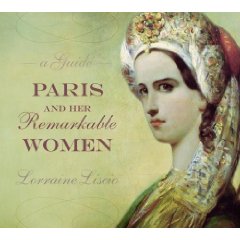Books |
Paris and her Remarkable Women: A Guide
Lorraine Liscio
By
Published: Nov 09, 2009
Category:
Biography
I flicked on the TV and there was Isabelle Adjani, one of my favorite actresses, in a film I’d never seen. A little application of Google, and I learned the movie was a biographical account of Camille Claudel, a sculptor who was mistress to the great Rodin. She may have been his equal as an artist, but she ended her days, mad and discarded, in an asylum.
I wanted to know more, and, another short Google session later, I ordered Hidden in the Shadow of the Master: The Model-Wives of Cezanne, Monet, and Rodin. It’s a Yale University Press book, thus scholarly, but scholarly on the fascinating side — here’s everything you might want to know about three “lost” women.
But you don’t want to know that much about most people. You’d settle for concise mini-biographies — like Wikipedia, only guaranteed reliable.
Paris and her Remarkable Women: A Guide is that kind of book. Lorraine Liscio profiles sixteen women closely associated with Paris, in neat mini-profiles that end with a sprinkling of kibbles — information about their residences and gravesites, books and movies.
Camille Claudel, for example. As a 12-year-old, she found her grandfather’s kiln and started working with clay. “From that time on, she forced friends and family members to pose for one another and habitually missed meals to devote herself to her work,” Liscio writes. Soon she made her family move to Paris. At 18, she became Rodin’s student; he quickly promoted her to assistant and then to model and lover. She began showing her own work and winning praise for it. After 15 years, their affair ended because Rodin wouldn’t leave his wife. Soon after they separated, Claudel began to accuse Rodin of stealing her ideas. “She took to smashing her sculptures in fits of despair and doing away with them in mock funeral burials.” The mental hospital beckoned…..
Liscio works chronologically, beginning with Genevieve (434-502), the patron saint of Paris, and ending with Simone de Beauvoir. Most names are familiar, though I knew nothing of Christine de Pizan, the first professional woman writer in France. I was aware that Emilie de Breuteil (Madame du Chatelet) was pretty much the intellectual equal of her lover, Voltaire; I didn’t know that she died, as she feared she would, soon after she had a baby at age 43. I was amused to read how Elisabeth Le Brun, known for her portraits of Marie Antoinette, escaped the guillotine. Until I read the Simone de Beauvoir chapter, I didn’t know the Germans put Parisians on an 850-calorie diet during their occupation in World War II.
Men and women, Beauvoir wrote, are like the trees at Versailles. They appear to grow naturally. Actually, they’re trimmed to look alike. Women are like that, she argues — pruned by the culture to look any way that men prefer.
Not these sixteen.


